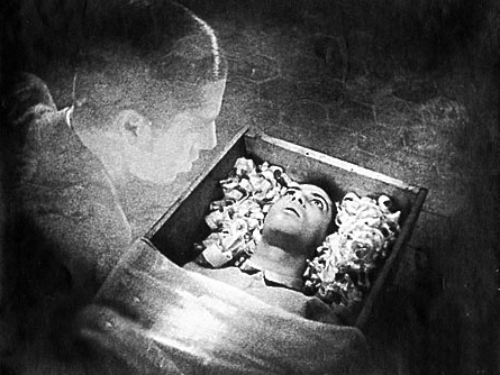TSPDT Rank #207
Initial viewing: c. 2006-2008
Vampyr is an early talkie with a ghostly atmosphere, aided by its disjointed production style and a main character described in the opening intertitles as “a dreamer for whom the line between the real and the supernatural became blurred.” Coming on the heels of director Carl Theodor Dreyer’s iconoclastic masterpiece of silent cinema, The Passion of Joan of Arc, Vampyr saw Dreyer pair up with the European aristocrat Nicholas de Gunzberg (aka “Julian West”) to try his hand at the horror film genre. The result has less in common with the Hollywood horror films of the day than it does with other privately-produced experimental films of the time period, such as Blood of a Poet and L’age d’or.

As in many famous surrealist films, Vampyr features a cipher-like protagonist who wanders through a series of strange events with little apparent motivation or narrative consistency. When Allan Gray first enters his room at the village inn, he is carrying what looks like a fishing net and rods - although since he never uses them, it’s difficult to know what they are. He passes a leering deformed man on the stairs and sees another man carrying a large scythe preparing to take a ferry across the river. Could he be the Grim Reaper? He is traveling away from our hero, but already it’s clear that there is danger afoot. This initial sighting is only the first of many instances in which Gray crosses paths with sinister characters but escapes unscathed himself. The reason for this is unclear, but whatever it is, Gray is usually painted as an observer rather than an active participant.

Nevertheless, what exactly Gray is witnessing is rarely clear. For viewers in the early 1930s, for whom the Universal horror classics like Frankenstein and Dracula were breaking new ground in mainstream horror cinema, an experimental horror film like Vampyr would have most likely sent most viewers into a state of disorientation and confusion. Even today, it has the potential to confound, especially upon first viewing. Knowing that Gray is obsessed with the supernatural and subject to dreaming, whether awake or not, the viewer must always bear in mind that he might be subconsciously filling in gaps in the story. As the film progresses, it becomes clear, with the help of frequent intertitles from a book about the supernatural, that a vampire is behind all of the strange happenings in the village. But strangely enough, by the time this revelation comes, it’s already too late for Gray to be an active participant in the fight against the foul creature. Instead, this role is assumed by a peripheral character, an anonymous servant who happens upon Gray’s book about vampires and decides to take matters into his own hands.


No comments:
Post a Comment